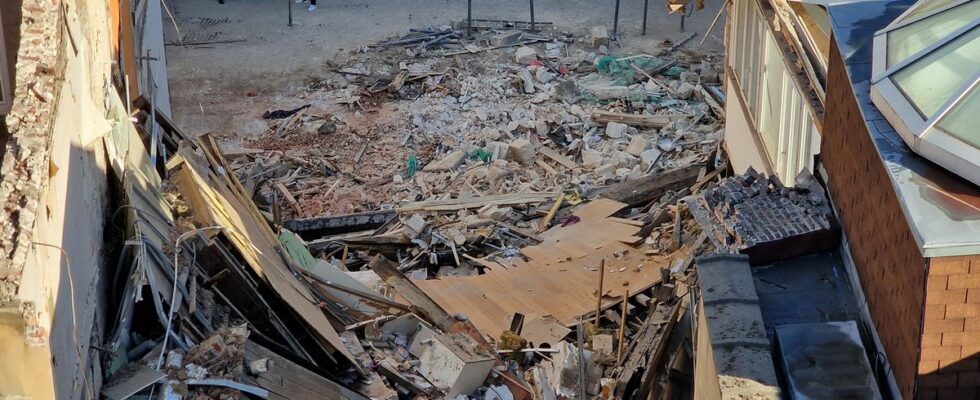Since the body of the psychiatrist was extricated from the rubble on Sunday morning, time seems suspended in the security perimeter surrounding the site of the collapse of two buildings, rue Pierre-Mauroy, in Lille. Placed under seal by the courts as part of the investigation opened for endangering the lives of others and manslaughter, the pile of rubble is inaccessible to anyone other than the legal expert and the PJ investigators. Except that the questions are piling up and the answers are long overdue, with all parties relying on expert reports.
This Monday morning, no one expected any particular revelation from the Minister Delegate for Housing, Olivier Klein, visiting the scene of the collapse. On the causes of the drama or on the hypotheses considered, we will not know more today. “Justice is seized, there are expert reports, I have no doubt that in the days or weeks to come, we will have explanations”, cuts the minister short. “There are a lot of experts who speak out, but let the real experts, the legal experts, give their opinion when the investigation is over”, annoys Martine Aubry, mayor (PS) of Lille.
1,150 insalubrity files opened in 2021
However, the elected official would like justice to give her the green light quickly, at least to clear the street of rubble and allow it to reopen to traffic or, at the very least, restrict the security perimeter to allow access to businesses and dwellings that are not in the immediate vicinity of the accident site. “For those who are in this area, we have to wait for the expertise to know if we can reopen, even if there is nothing to indicate that other buildings are weakened”, explains the mayor, who is also thinking about a way to compensate them. .
On the suspicion of dilapidation which hovers above the two collapsed buildings, the minister reaffirmed that they had “not been the subject of any report in this sense”. More generally, Martine Aubry recalls that the town hall does not have all the powers on this subject: “Last year alone, we opened 1,150 files of insalubrity in the city, of which between 110 and 130 posed security problems”, she assures. But still it is necessary that the services of the city are informed. “Tenants can contact us and if there is a problem, we act quickly thanks to the 20 health inspectors we have”, continues the elected official. It is this responsiveness that allowed the taking of a danger order for 44, rue Pierre-Mauroy on the night of Friday to Saturday.
“No one thought it was going to collapse so quickly”
But what would have happened then, if the building had not collapsed? “No one thought it was going to collapse so quickly, so we had planned to set up a security perimeter in front of the building in the morning, recognizes Martine Aubry. We have a lot of danger orders, but we don’t close off a neighborhood every time, unless the experts tell us that there is a real imminent risk”.
Then, the city would have taken steps with the owners. “On the other hand, if the danger is imminent and it is difficult to contact the owners, the city can replace them and carry out the work urgently”, adds Audrey Linkenheld, deputy mayor of Lille in charge of ecological transition and sustainable development.
On social networks or in the media, we hear many experts and architects warn about the risks associated with the instability of buildings, especially in Old Lille. If the Minister Delegate for Housing insisted on the unpredictability of the disaster on Saturday, he nevertheless promises that the authorities will not stop there: “We want to have substantive work in addition to judicial expertise. A study mission will be carried out by the CSTB – scientific and technical building center – to investigate the causes of this accident in greater detail and ensure that it cannot happen again here or elsewhere. »

